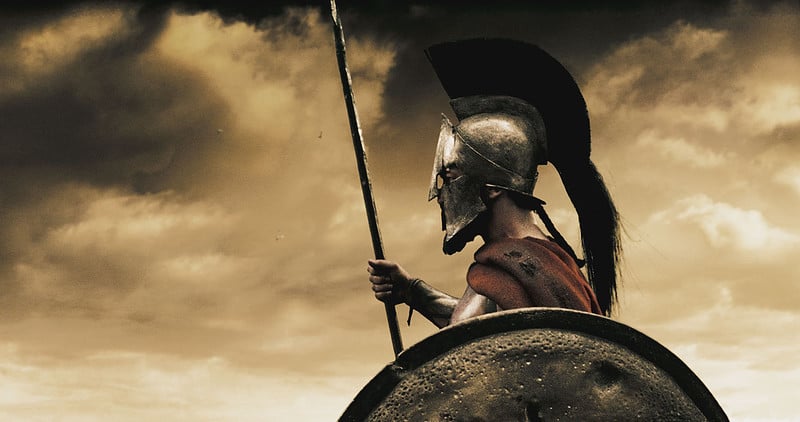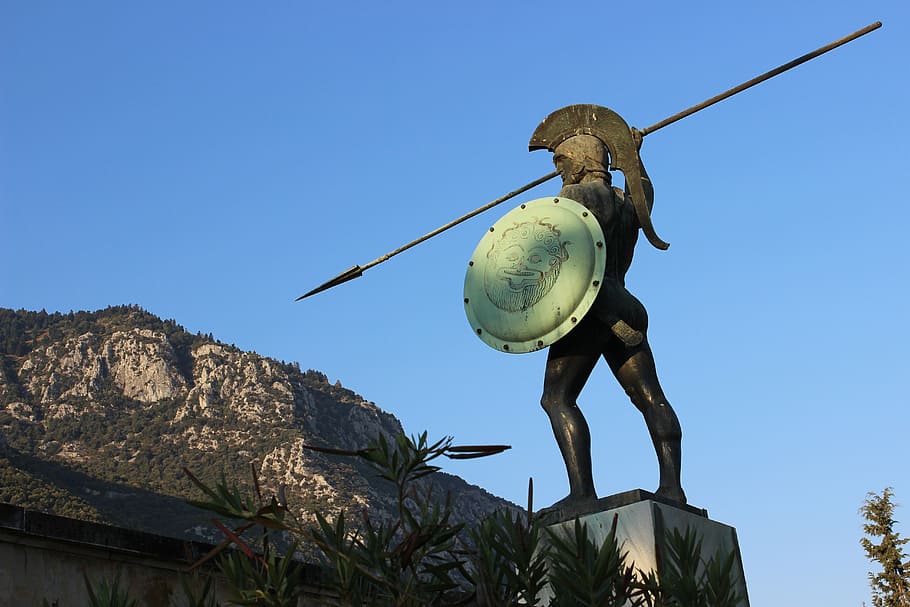
“It is remarkable that Sparta had no walls when all the other cities did,” Elon Musk observed recently in response to a user’s image of a Spartan warrior.
Spartans of the Archaic and Classical periods took pride in not having walls of stone because it underlined their supreme confidence in their ability to defend their borders (and city) effectively with their active army.
It is remarkable that Sparta had no walls when all the other cities did
— Elon Musk (@elonmusk) May 12, 2023
The sparsity of ruins from antiquity around the modern city reflects the austerity of the military oligarchy that ruled the Spartan city-state from the 6th to the 2nd century BC.
Helena Schrader, a historian at the University of Hamburg, explained that Archaic and Classical Sparta were without walls for three reasons:
1) the geography with Taygetos to the West and the Paron range to the East made Sparta comparatively secure from any kind of invasion or raid;
2) Sparta controlled the territory even beyond the natural defensive features, enabling its army to fight at the borders and if necessary withdraw while fighting along the mountain passes, and
3) because of the above the Spartans had developed an ethos or tradition that made her army her walls.
Historian John Dayton PhD from Brown University, adds another reason for the lack of defensive walls in ancient Sparta:
“The reason Sparta did not have many vast fortifications or buildings was due to a lack of liquid currency. Coinage probably was not actually banned as early as Solon’s time, as Plutarch records, and was never completely extirpated, but the flurry of defensive wall and temple building in the Archaic period came a a result of commercial prosperity, which did not reach agricultural Sparta. It was generally necessary to hire specialists from cities abroad for large projects, and Sparta did not have the means to pay them.”

Sparta built defensive walls closer to its decline
However, the Spartans had to build walls around their city in the centuries after their defeat in the Spartan-Boeotian League War (eg. against Thebes) that started their decline.
But the absence of walls was only one of the unique features of Sparta as a physical city. The ancient Athenian historian Thucydides made a prediction in his History of the Peloponnesian War that has come true with a vengeance.
He wrote:
“…[if] Sparta were to become deserted and only the temples and foundations of buildings remained, I think that future generations would, as time passed, find it very difficult to believe that the place had really been as powerful as it was represented to be.
“Yet the Spartans occupy two-fifths of the Peloponnese and stand at the head not only of the whole Peloponnese itself but also of numerous allies beyond its frontiers.
“Since, however, the city is not regularly planned and contains no temples or monuments of great magnificence, but is simply a collection of villages, in the ancient Hellenic way, its appearance would not come up to expectation.
“If, on the other hand, the same thing were to happen to Athens, one would conjecture from what met the eye that the city had been twice as powerful as in fact it is.”
This statement, Schrader explains, was as much a criticism of Athens’ building program under Pericles (that had diverted contributions from the Delian League, intended for defense against the Persians, to building extravagant temples in Athens) as a critique of Sparta.
Sparta was not a primitive city
Yet it has misled modern scholars and novelists to portray Sparta as if it were a primitive village of dirt and mud.
For example, in his best-selling novel Gates of Fire, Stephen Pressfield calls Sparta “a village” adding: “The whole stinking place would fit, with room to spare, within His Majesty’s [Xerxes of Persia’s] strolling garden at Persepolis. It is … a pile of stones. It contains no temples or treasures of note, no gold; it is a barnyard of leeks and onions, with soil so thin a man may kick through it with one strike of the foot.”
Modern writers are often guilty of both a too hasty reading of Thucydides and a failure to consider other evidence. Thucydides complains that Sparta “is not regularly planned” – but then nor is London. And he says it is “simply a collection of villages, in the ancient Hellenic way.”
This is not the same thing as saying Sparta was not a cosmopolitan city, it only means that Sparta had no plan and no walls and hence grew haphazardly — as all major European cities did after their confining medieval walls were torn down.
No one today would call Paris, Berlin or Rome “a collection of villages” simply because they are in fact many villages that have grown into a single metropolis after the need for fortifications disappeared and economic growth fueled urbanization.
Why should we assume that just because Sparta was made up of five distinct villages in pre-Archaic times that it was not – in its years of glory – a cohesive, dynamic city? Schrader ponders.
Likewise, when Thucydides writes Sparta “contains no temples or monuments of great magnificence” he is not denying the existence of temples and monuments, only ones “of great magnificence” – such as Pericles built with stolen funds from Athens satellite states without their consent.
In short, Schrader argues that Thucydides never claimed Sparta was not a major, metropolitan city, nor did he deny it had notable monuments, he was only making the astute statement that, judged by its buildings alone, future generations would over-estimate the power of Athens and under-estimate that of Sparta.
See all the latest news from Greece and the world at Greekreporter.com. Contact our newsroom to report an update or send your story, photos and videos. Follow GR on Google News and subscribe here to our daily email!



